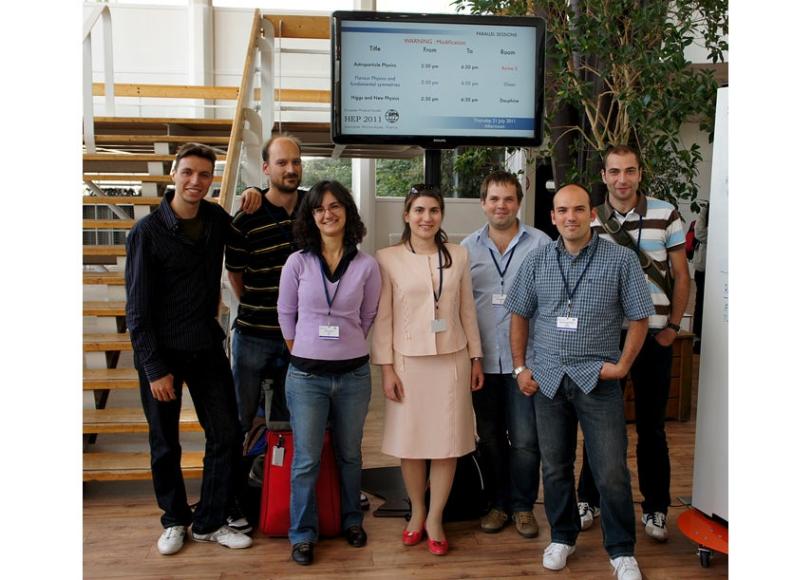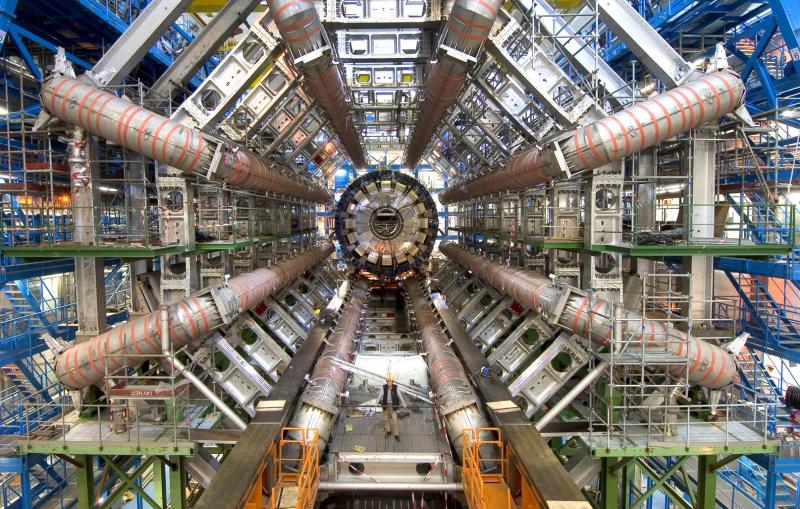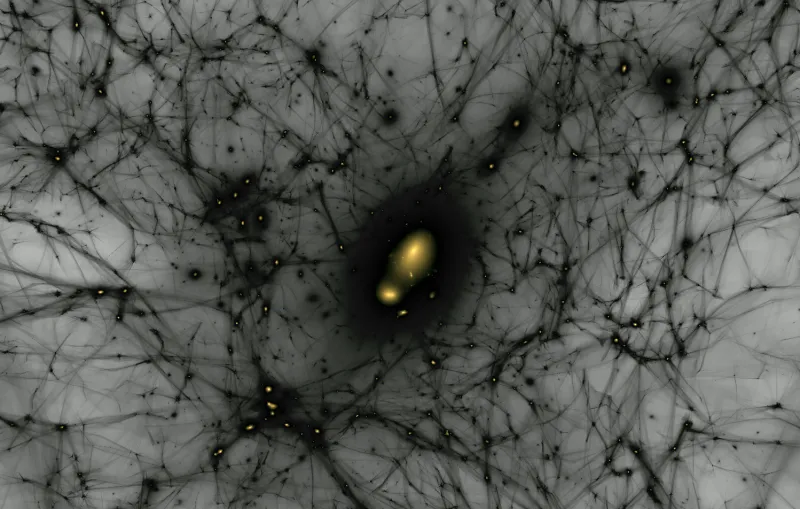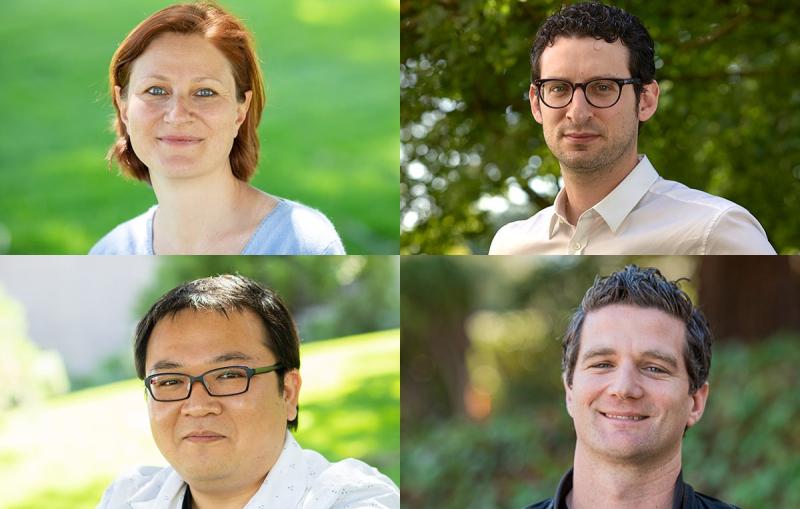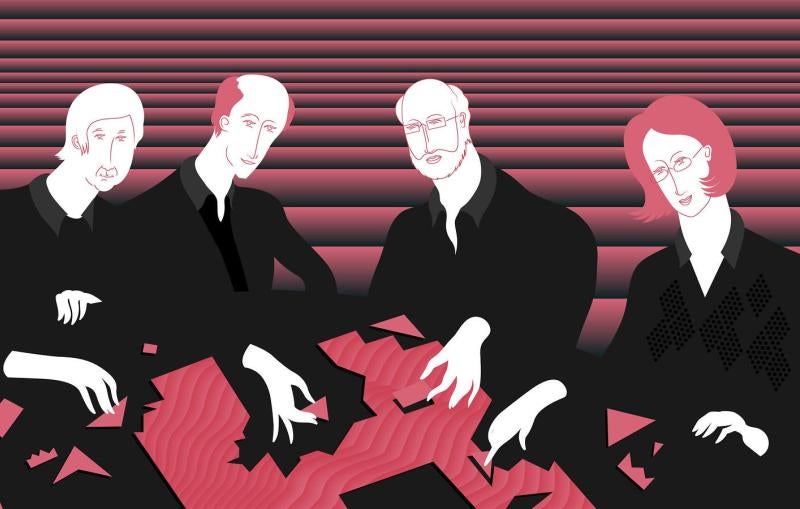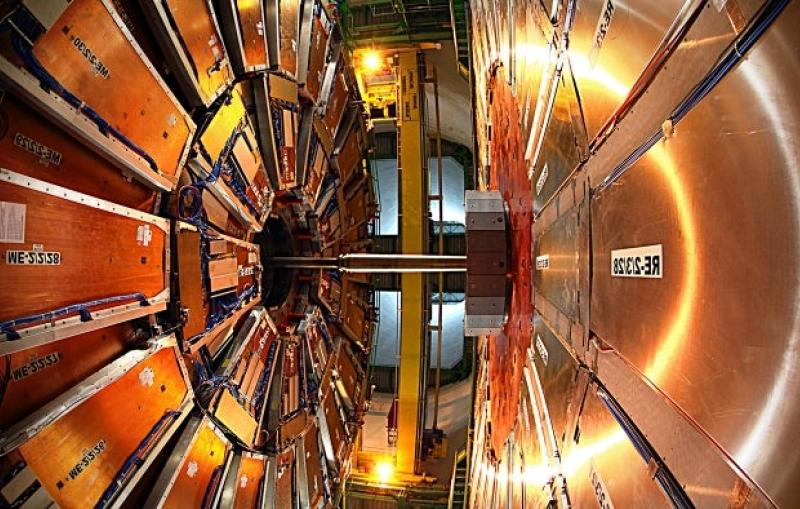Will the Real Higgs Boson Please Stand Up?
Although physicists from two experiments at CERN's Large Hadron Collider and from Fermilab’s Tevatron collider recently reported at the Europhysics Conference on High Energy Physics that they didn't find the Higgs boson, they're continuing to home in on the elusive particle, prompting Rolf-Dieter Heuer, the Director General of CERN, to go on record that he believes a neutral Higgs boson will be found by the LHC by the end of 2012.
By Lori Ann White
Although physicists from two experiments at CERN's Large Hadron Collider and from Fermilab’s Tevatron collider recently reported at the Europhysics Conference on High Energy Physics that they didn't find the Higgs boson, they're continuing to home in on the elusive particle, prompting Rolf-Dieter Heuer, the Director General of CERN, to go on record that he believes a neutral Higgs boson will be found by the LHC by the end of 2012.
Meanwhile, at the same conference but during a different session, BaBar collaboration member and SLACer Manuel Franco Sevilla delivered his own report touching on the Higgs. In its own way, Sevilla's contribution was even more curious than the reports from the LHC, because the Higgs boson that the BaBar collaboration didn't find is not the same Higgs boson that the CMS and ATLAS experiments at the LHC could not find in their data.
Wait a minute! In both cases the Higgs is that mysterious particle responsible for bestowing mass upon its subatomic brethren, right? But – as it happens – not all Higgs bosons are created alike.
"The ATLAS and CMS results refer to a neutral Higgs boson," said SLAC’s Steve Robertson, the current physics analysis coordinator for BaBar. The neutral, or uncharged Higgs boson is the only member of the Standard Model's rogues' gallery of subatomic particles to remain at large after decades of searching.
Or – the neutral Higgs boson could be a member of a family of Higgs bosons, including electrically-charged versions, mandated by supersymmetry. Supersymmetry is the theory that says every particle in the Standard Model has a much heavier partner particle that also hasn't been found yet.
The Higgs boson BaBar didn't find must have a charge. That means it’s not just a Higgs, but a non-Standard Model Higgs.
Which leads one to wonder – how can a low-energy experiment like SLAC’s PEP II B Factory, originally built to investigate differences between matter and antimatter and no longer even taking data, compete with a monster matter masher like the LHC that was built, in a large part, to find the Higgs?
"It turns out we're actually very sensitive to the indirect effects of charged Higgs particles," Robertson explained, "but finding them is hard work for the LHC."
PEP II, like the LHC – and indeed like every other particle collider ever built – turns the energy released by collisions into new particles that decay almost as fast as they're created. Experiments examine the decay products for hints of new physics. The BaBar detector was built to detect B and anti-B mesons, short-lived particles consisting of bottom quarks and anti-bottom quarks, and search for differences in their creation or decay – and to look for an odd phenomenon that might explain why the universe is made of matter rather than antimatter.
Sevilla's study focused on one particular set of decays sensitive to charged Higgs particles – the decay of a B meson to a D meson, a heavy cousin of the electron called a tau lepton, and its partner the tau neutrino. This decay normally proceeds via the W boson, by now a well-known particle. But in general, Higgs particles affect processes involving heavy particles more strongly. Since the B and D mesons and the tau lepton are relatively heavy, if a charged Higgs exists, it could also contribute to this decay. To conduct this study, The BaBar researchers had to make precise measurements of how frequently the decay of the B boson to a D boson and tau lepton-neutrino pair takes place.
It was not an easy job.
One big problem is that pesky tau neutrino, as well as two other neutrinos originating from the subsequent decay of the tau lepton – multiplied by millions of possible events. Neutrinos have almost no interaction with matter, and zip through a detector without leaving a trace. To account for the neutrinos produced in a collision, scientists must subtract the total amount of energy and momentum coming out of the collision from the total mass and energy that went into it. The balance may account for the energy and momentum carried by the neutrinos, but whether it actually does is another question – missing energy and momentum can also be the result of more mundane processes, such as improperly reconstructed particles or electronic noise.
"Accounting for one neutrino is pretty hard," Sevilla said, "but accounting for all three per decay is a nightmare." He's confident they've done it. "We have computer algorithms that we've been working on for the last few years that are super efficient" at distinguishing these decays, he said. Thanks to the sophisticated analysis, the BaBar result is the most precise measurement of this particular decay rate to date. Sevilla has more work to do to improve the precision of his results.
So what precisely did Sevilla and his teammates find?
They found slightly more of the B mesons decaying into D mesons and tau leptons than expected – more than the Standard Model predicts. In more technical terms, the new BaBar results favor the existence of a charged Higgs boson with a significance of about 1.8 – "not considered particularly compelling," Robertson emphasized, "but interesting." Even more interesting, this small discrepancy with respect to the Standard Model prediction matches the results of another process, where the B meson decays into a tau lepton and a tau neutrino without creating a D meson, as measured by BaBar – and by Belle, a Japanese experiment that also looks at B meson decay.
Unfortunately, none of this means the BaBar collaboration is going to scoop the LHC on the charged Higgs. As Robertson explained, BaBar simply doesn't have enough data to make a definitive statement about the charged Higgs one way or another. "This will really be the territory of 'super-B factories'" – upgraded versions of PEP II and KEKB, the Japanese collider that's the home of Belle. Super-B factories planned for Italy and Japan will generate about a hundred times more data, placing a charged Higgs, within reach. But until the new super-B factories come on line, the LHC will continue to generate record-setting numbers of proton-proton collisions and gather ever more data in order to make the CERN director-general's deadline of the end of 2012.
But whether it's a neutral Standard Model Higgs or a neutral supersymmetric Higgs will still be the question, and the answer will involve the existence – or non-existence – of a charged Higgs boson.
Contact
For questions or comments, contact the SLAC Office of Communications at communications@slac.stanford.edu.
